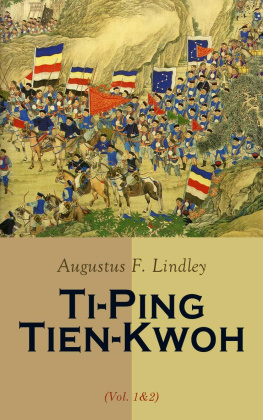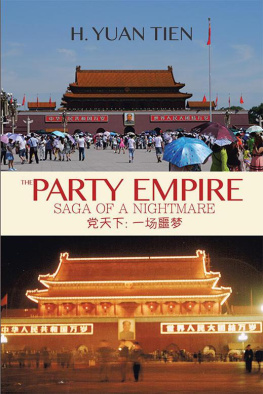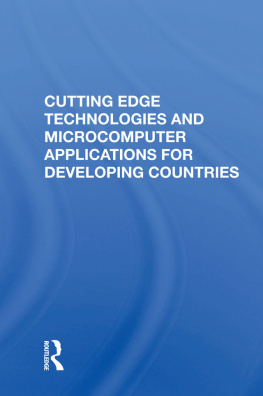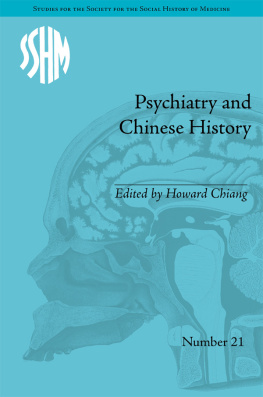Tien-wei Wu - The Sian Incident: A Pivotal Point in Modern Chinese History
Here you can read online Tien-wei Wu - The Sian Incident: A Pivotal Point in Modern Chinese History full text of the book (entire story) in english for free. Download pdf and epub, get meaning, cover and reviews about this ebook. year: 2020, publisher: Kenneth G. Lieberthal and Richard H. Rogel Center for Chinese Studies, genre: Science. Description of the work, (preface) as well as reviews are available. Best literature library LitArk.com created for fans of good reading and offers a wide selection of genres:
Romance novel
Science fiction
Adventure
Detective
Science
History
Home and family
Prose
Art
Politics
Computer
Non-fiction
Religion
Business
Children
Humor
Choose a favorite category and find really read worthwhile books. Enjoy immersion in the world of imagination, feel the emotions of the characters or learn something new for yourself, make an fascinating discovery.

- Book:The Sian Incident: A Pivotal Point in Modern Chinese History
- Author:
- Publisher:Kenneth G. Lieberthal and Richard H. Rogel Center for Chinese Studies
- Genre:
- Year:2020
- Rating:5 / 5
- Favourites:Add to favourites
- Your mark:
- 100
- 1
- 2
- 3
- 4
- 5
The Sian Incident: A Pivotal Point in Modern Chinese History: summary, description and annotation
We offer to read an annotation, description, summary or preface (depends on what the author of the book "The Sian Incident: A Pivotal Point in Modern Chinese History" wrote himself). If you haven't found the necessary information about the book — write in the comments, we will try to find it.
Tien-wei Wu: author's other books
Who wrote The Sian Incident: A Pivotal Point in Modern Chinese History? Find out the surname, the name of the author of the book and a list of all author's works by series.
The Sian Incident: A Pivotal Point in Modern Chinese History — read online for free the complete book (whole text) full work
Below is the text of the book, divided by pages. System saving the place of the last page read, allows you to conveniently read the book "The Sian Incident: A Pivotal Point in Modern Chinese History" online for free, without having to search again every time where you left off. Put a bookmark, and you can go to the page where you finished reading at any time.
Font size:
Interval:
Bookmark:

THE UNIVERSITY OF MICHIGAN
CENTER FOR CHINESE STUDIES
MICHIGAN PAPERS IN CHINESE STUDIES
NO. 26
THE SIAN INCIDENT:
A PIVOTAL POINT IN MODERN CHINESE HISTORY
by
Tien-wei Wu
Ann Arbor
Center for Chinese Studies
The University of Michigan
1976
Open access edition funded by the National Endowment for the Humanities / Andrew W. Mellon Foundation Humanities Open Book Program
ISBN 0-89264-026-X
Copyright 1976
by
Center for Chinese Studies
The University of Michigan
Printed in the United States of America
Grateful acknowledgment is made to the Viking Press, Inc., for their permission to reproduce two photographs, Generalissimo Chiang and the Young Marshal (p. 132) and Peasant Guards in Armed Procession in Sian (p. 133), from First Act in China: The Story of the Sian Mutiny, by James M. Bertram, copyright 1938 by The Viking Press, Inc.
ISBN 978-0-89264-026-3 (paper)
ISBN 978-0-472-12814-3 (ebook)
ISBN 978-0-472-90214-9 (open access)
The text of this book is licensed under a Creative Commons Attribution-NonCommercial-NoDerivatives 4.0 International License: https://creativecommons.org/licenses/by-nc-nd/4.0/
To
My Mother
CONTENTS
Almost forty years after the melodrama enacted at Hua-ch'ing-ch'ih, the hot-spring resort of the celebrated Chinese beauty Yang Kuei-fei, the Sian Incident still absorbs much attention from both Chinese and Western scholars as well as the reading public. The Incident is doubtless one of the most sensational episodes in modern history and many people still view the event with excitement, regret, and indignation. While the dramatic capture of Chiang Kai-shek and his abrupt release have already mystified many, the negotiated settlement and the aftermath of the Incident remain largely in speculation.
Apart from the coup itself, the Sian Incident was the pivotal point in modern Chinese history, so crucial in fact to the survival of the Chinese Communist movement that even today Nationalist writers and officials in Taiwan denounce the Young Marshal Chang Hseh-liang for having done unforgivable and irreparable damage to the nation. They argue, as did Chiang Kai-shek himself, that the Red Army, then numbering approximately 30,000 men and cornered in the inhospitable North Shensi, would have been doomed to destruction, had the Sian Incident not occurred to ruin the whole plan for its extermination.
In spite of so much that has been written, the Sian Incident-ranging from the CCP campaign for a united front against Japan, local suspension of civil war between the Red Army and the Tungpei-Hsipei Armies, the engineering of the coup, negotiations for a peaceful settlement, the aftermath of the coup, and the fate of the two chief actors, Chang Hseh-liang and Yang Hu-ch'engis only known in fragmentary forms. Writings either in the form of reminiscent account or from the approach of analytical study have continuously poured out from the Chinese press in Hong Kong and Taiwan. In one way or another, these publications have revealed crucial information which would otherwise have remained hidden, but few of them are without partisan bias, and at the same time they fail to give a conceptual framework to the subject.
Conversely, Western study of the Incident is somewhat one-sided, tending to place undue emphasis on the role of the CCP. To a great extent, Western scholarship has suffered from Edgar Snow's authoritative, pioneering works. As is well known, his account of the Incident is Communist-centered, partly because of his keen concern with the CCP and partly because of his journalistic account which relied heavily on interviews with a few people, particularly Chou En-lai and Miao Chien-ch'iu. This is by no means to minimize the important contributions Snow made to our understanding of many events involving the Chinese Communists. Admittedly, the importance of the Sian Incident lies primarily in its influence on the course of the Chinese Communist movement; it is viewed as a distant cause for the Communist takeover of China. It is easy to overlook the fact that eight years of the Sino-Japanese War and four years of the Chinese civil war had intervened between the Sian Incident and the Communist triumph in China. True, the Sian Incident led to the temporary suspension of the KMT campaign against the Red Army; yet there was no guarantee that the KMT or Chiang Kai-shek would not resume the campaign in spite of a verbal promise given to his captors upon leaving Sian. The forces that upheld the Sian accord must be scrutinized and assessed before a justifiable conclusion concerning the effect of the Sian Incident on the KMT-CCP relations can be reached.
In writing this book, I have attempted to bring together whatever information has been thus far gleaned about the subject, and to cover all aspects and controversies involved in it. This undertaking grew out of both personal concern and scholarly interest for many years, and it is built upon the labor of many scholars and writers from James Bertram to Lucien Bianco. In addition to the revelations made by the captive and his captor, Generalissimo Chiang and the Young Marshal, as well as by the two negotiators, Madame Chiang and William Donald, three participants of the Incident revealed valuable information in their interviews with me. They are Miu Cheng-liu, Commander of the 57th Tungpei Army, Wan Yao-huang, army commander who was detained at the Sian hostel, and Mao Ching-hsiang, Chiang's secretary who was with him at Hua-ch'ing-ch'ih. Further, Mr. Mao has generously provided me with two pictures related to the Sian event, which have been reproduced and inserted in this book.
At various stages of this study, many scholars gave great help and criticism that improved the quality of the work beyond the reach of my ability. Among those whose help should be specially mentioned are: Professors C. Martin Wilbur of Columbia University, Eugene Wu of Harvard University, Knight Biggerstaff of Cornell University, Lucien Bianco of Sorbonne of the University of Paris, and Eugene Trani of Southern Illinois University at Carbondale. I am deeply indebted to Mrs. Beth Haas and Mrs. Jennie E. Calonne of theDepartment of History at Southern Illinois University for improving the style and typing the manuscript. Special thanks is due the Publications Committee of the Center for Chinese Studies at The University of Michigan, particularly its Director, Professor Albert Feuer-werker, without whose interest and support, this book may not have been published. Finally my profuse thanks to Jeannie Lin for providing me with invaluable editorial assistance and to Dorothy Perng for her excellent calligraphy.
T. W. Wu
New York
November 1975
| CCC | Ch'en Ch'eng Collection |
| CCP | Chinese Communist Party |
| CCWH | Ch'uan-chi wen-hsueh [ Biographical literature] |
| CEC | Central Executive Committee |
| Comintern | The Third Communist International |
| CTTC | Chiang Tsung-t'ung chi [Collected works of President Chiang] |
| CWR | China Weekly Review |
| KMT | Kuomintang |
| KWCP | Kuo-wen chou-pao [ National news weekly] |
| MPYK | Ming-pao yueh k'an [ Ming-pao monthly] |
| NHBS | Northwestern Headquarters of Bandit Suppression. |
After the epic Long March, the worn, nervous, beaten, but not annihilated Communists at last reached their temporary destination, North Shensi, in the fall of 1935. It took another year for the two separated Communist groupsthe one under Mao Tse-tung reaching North Shensi and the other under Chang Kuo-t'ao and Chu Teh remaining in Inner Tibetto be reunited. In the new situation the Communist leaders must have realized that at best they could hope to establish and consolidate a new base bordering Inner Mongolia and Ninghsia, while at worst they could expect to seek asylum in Outer Mongolia or Sinkiang or even inside the Soviet Union.
Font size:
Interval:
Bookmark:
Similar books «The Sian Incident: A Pivotal Point in Modern Chinese History»
Look at similar books to The Sian Incident: A Pivotal Point in Modern Chinese History. We have selected literature similar in name and meaning in the hope of providing readers with more options to find new, interesting, not yet read works.
Discussion, reviews of the book The Sian Incident: A Pivotal Point in Modern Chinese History and just readers' own opinions. Leave your comments, write what you think about the work, its meaning or the main characters. Specify what exactly you liked and what you didn't like, and why you think so.











